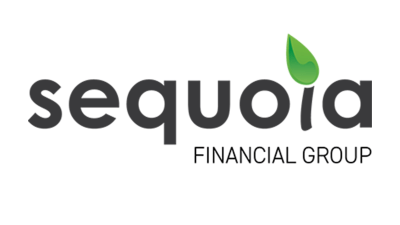Fund manager floats: from a trickle to a flood?



Dominic McCormick
The big question posed by PlatinumAsset Management’s partial sale and listing, which valued the business at $2.8 billion, is why? It’s not as if Kerr Neilson and the other founders need the cash given the dividends the business has spun off in recent years.
Neilson has put forward a number of reasons: the ability to reward a growing team through options and equity; as a reference price for the group’s endeavours; and enabling shareholders to realise part of their investment.
These may well be valid reasons, but it is hard not to conclude that a group as contrarian and market astute as Platinum is being a bit opportunistic given the current voracious appetite for listed fund management stocks.
It seems likely the Platinum float may inspire other fund managers to go down the same route.
I have written before on the issues facing listed fund managers and the additional public pressures that can impact businesses already subject to intense scrutiny of performance from investors and advisers (see “Listing to shareholder pressure” Money Management August 25, 2005).
Of course, some of the pressures I talked about in that article are less of an issue when founders and staff retain 80 per cent, as is the case with Platinum.
It is also true that institutions, which are usually the most vocal in these short-term pressures, will be largely absent from the Platinum register at the time of the float, although they may well come to hold stock over time.
Still, even with financial planners and current fund investors likely to end up as the main external shareholders, some new pressures are likely to emerge.
How does Platinum look as an investment proposition? It certainly seems to be the least complex of the local listed fund management companies and the business is relatively simple to analyse.
It has $22 billion in funds under management (FUM), earning an average base fee of around 1.3 per cent, with around 20 per cent of its business having a variable performance component.
The main costs are people (66 including 25 investment professionals), which will increase with more incentives, but total expenses still represent only around 20 per cent of revenue.
At a forecast PE (price/ earnings ratio) of 17.6 for the 2006-07 financial year, Platinum is being offered at a discount to most of the other listed fund management stocks, almost all of which are trading at PE multiples above 20 (although I doubt whether these current multiples are sustainable).
Platinum will pay 80-90 per cent of profit out, so it will have a high dividend yield of around 5.5 per cent on the float price. Current year forecast profits before tax of $239 million include over $19 million of float costs.
Paying a price that represents 12.6 per cent of FUM may seem expensive compared to other conventional managers, but it probably isn’t high considering the high margins and the relative stickiness of their primarily retail client base.
Indeed, it seems cheap compared to the 25 per cent plus of FUM that the listed hedge fund groups are trading at (one of which is primarily a distributor).
One vital question is whether Platinum can grow FUM significantly from here? There is no doubt that it would have been a great business to own at $1-2 billion on a growth path to $22 billion, but what about growth from current levels of $22 billion?
Obviously, good investment performance will generate its own growth in FUM, but beyond this Neilson says they have no specific plans for growth.
However, it would be surprising if, as a listed entity, they don’t feel a little more pressure to gradually grow their product range and FUM over time.
The manager recently offered an unhedged version of its international fund, and perhaps an Australian focused fund is possible at some point.
It would also not surprise if it started growing the listed Platinum Capital via rights issues, an action likely to remove the excessive premium to net tangible assets (NTA) at which it trades.
If the growth came, how effectively could they manage say $30, $40 or $50 billion?
Neilson was recently quoted saying that one of the good things about a committed team in funds management is that you get a little better at the job each year.
True enough, but, on the other hand, all the evidence suggests that even the best manager’s out-performance can deteriorate as they grow much larger. Just how much that performance suffers is the key question.
Could Platinum ever grow to be one of the great monoliths of global investment management with several hundred billion such as a Capital or Wellington?
For such a manager to be based in Australia would be a first, but I suppose nothing is impossible in the more globalised world we live in. Around 20 per cent of Platinum’s FUM already comes from offshore.
Overall then, if markets hold up, I would not be surprised to see Platinum list very successfully when it begins trading on May 23.
Arguably, given its transparency, it deserves to trade at a premium, not a discount, to most of the other listed fund management companies (recognising once again that I don’t expect the current expensive multiples to be sustained indefinitely).
I would then expect the market to take time to develop a view on the medium to longer-term growth profile as a listed entity.
This is not to downplay the obvious risks (the most talked about being key man risk since no one is explicitly locked in), which are well spelt out in the prospectus.
The big risk for all listed fund managers currently is simply a de-rating of current high multiples of earnings and FUM at which they trade.
A return to the 10 to 15 times PE multiples of just a few years ago would cause some very savage price falls.
The key problem is that when things go wrong for listed fund management companies they tend to go wrong all at once.
The ‘triple whammy’ — poor investment performance, redemptions causing declining FUM, and declining market ratings can savage share prices of listed fund managers. A fourth negative, declining fee levels, is also more likely in such an environment.
Still, for such a scenario, a bear market is usually necessary and the market is ignoring this possibility for now, focusing instead on the funds management growth story driven by demographics and legislated superannuation growth.
In this environment there will almost certainly be more fund manager listings.
The latest listing of some sorts is Contango Asset Management (CAM).
Interestingly, CAM, despite over $2 billion under management, earns a small profit of around $2-$2.5 million, primarily because most of its business is in the low margin area of conventional wholesale mandates.
Rather than list the full business (at a market cap of around $30 million), they have proposed floating an $85 million listed investment company (LIC), Contango Capital Partners, that will hold 50 per cent of CAM as part of its mandate of investing in fund management and financial services businesses (both listed and unlisted).
For this vehicle, Contango Asset Management has a 10-year management contract and will charge 1.75 per cent and a 15 per cent performance fee over cash plus 5 per cent.
It is unclear whether this fee also applies to the CAM component.
I’d definitely favour Platinum over this vehicle, although its success or failure will obviously depend on the portfolio of businesses it purchases.
The Contango Capital Partners float is highlighting the increasing crossover between the listed fund management and LIC areas.
For example, Australian Equity LIC MMC Contrarian recently bought out its manager, MMC Asset Management. Magellan Financial Group (MFG) was created out of the old Pengana Fund Managers. As well as being a start up fund manager, it will invest in other fund managers and principal investments.
MFG also offered an entitlement in itself to investors in the float of its LIC Magellan Flagship Fund (MFF). Fund of hedge fund Everest Babcock and Brown (EBB) has recently done something similar in a capital raising for its listed fund, Everest Babcock and Brown Trust (EBI).
In the broader listed managed investments area, major listed property trusts with internal management have increasingly been offering external funds.
Other specialist investment vehicles, such as private equity firm CVC, have also offered external funds. This trend is likely to continue.
There is no doubt fund management continues to be a growth area, and growth areas always spawn their share of new listed companies.
However, fund management is also an area where the barriers to entry are reasonably low (although the barriers to success are significantly higher).
Listed fund managers will do well while the party continues, but the indiscriminate valuation of almost all listed fund managers at significant premiums to the market is unlikely to be sustained. It is inevitable that tougher times will eventually result in a shake out. Platinum will not be immune, but will probably weather that storm better than most.
Overall, while I believe some listed fund managers underestimate the additional pressures that listing brings, there is a case that a listed Platinum still majority owned by management can remain largely shielded from most of these.
Indeed, a somewhat higher profile for a fund management business as transparent and well run as Platinum could be seen as positive for the industry as a whole.
If more participants in the investment industry conducted their business and investment activities the way Platinum does, investors would almost certainly have a better experience, and the reputation of the industry would be improved.
Dominic McCormick is the chief investment officer at Select Asset Management .
Recommended for you
Centrepoint Alliance has overtaken Count as the second largest AFSL with more advisers in the pipeline and strong EBITDA growth predictions for FY2026.
ASIC has released an update to its regulatory guidance on managing conflicts of interest for financial services businesses on the back of its primate markets surveillance.
Sequoia Financial Group has flagged a series of non-cash impairments for the first half of FY26, citing exposure to Shield and First Guardian and provisions for potential professional indemnity insurance claims.
The Australian Wealth Advisors Group has completed two strategic investments, doubling its number of authorised representatives and increasing its FUMA by more than $1 million.










